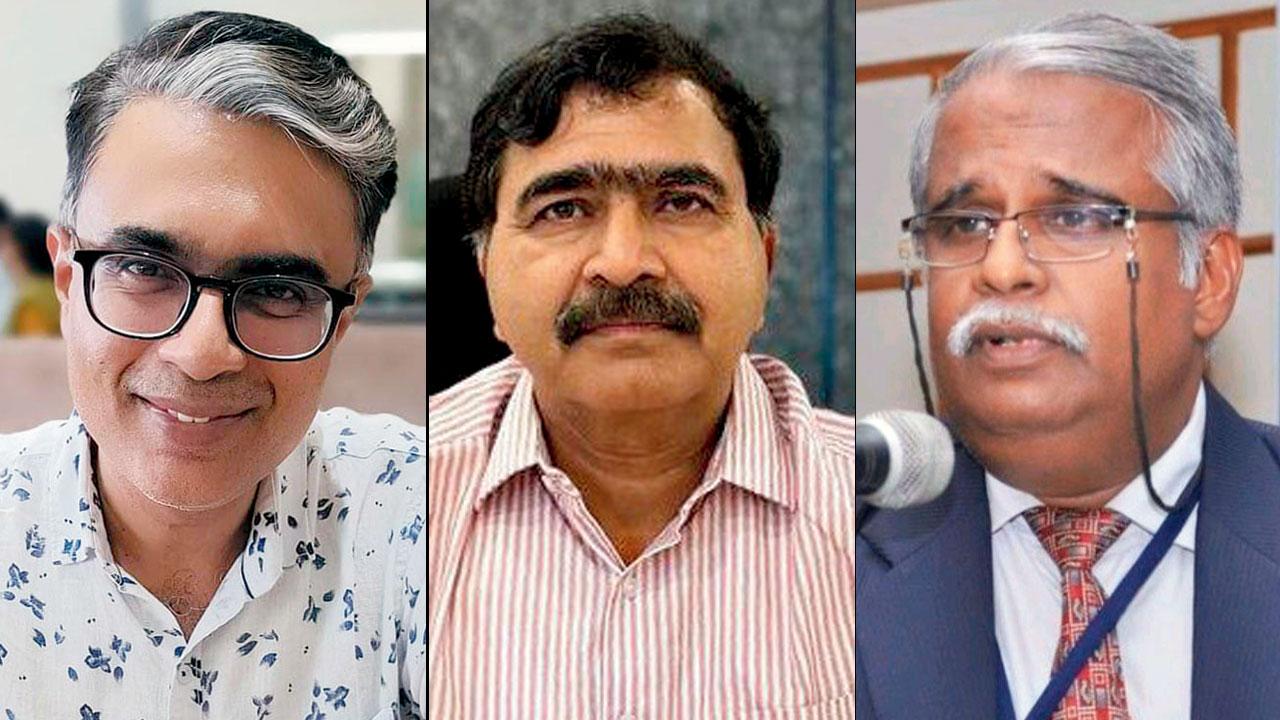From the Jeep Scandal in 1948 to the Oshiwara Ponzi Scheme this year, financial crimes have come a long way, but so have financial forensics. mid-day takes a closer look at the fine science that helps nail white collar criminals

With white-collar crimes increasing in incidence as well as scope, financial forensics is proving to be a boon for law enforcement agencies when it comes to investigating and collecting evidence. Representation Pic
The first recorded big financial fraud in India is widely said to be the Jeep Scandal of 1948, when VK Krishna Menon, the then Indian High Commissioner to Britain, allegedly signed a deal for the purchase of 2,000 jeeps for the Indian Army for Rs 80 lakh. Only 155 jeeps, however, were delivered, were refurbished ones instead of new, were rejected as substandard and the company that supplied it was later found to have a capital of only 605 British Pounds.
ADVERTISEMENT
Fast forward to 2024, when the Mumbai Police’s Economic Offences Wing arrested Ambar Dalal, a Mumbai-based businessman, for allegedly cheating over 592 investors to the tune of Rs 380 crore in a Ponzi scheme. The country has also witnessed other multi-crore rupee scams from 1948 to now.
Speaking about the changing scope of financial crimes, Rohit Madan, Partner Forensic at Deloitte India, says, “White Collar crimes are not limited in current times by type, sub-type, scale or quantum attributable to them. In a fast-changing world marked by evolving financial and business market disruptors, fraudsters have time and again successfully proved that they are as innovative and more often than not a step ahead against the unsuspecting victims. The end objective, however, has not changed, which is to lure unsuspecting victims of assured windfall financial gains which otherwise is not available from any of the known regulated investment avenues. A Ponzi scheme is just a typical case-in-example of such a white-collar crime. “
What has changed, though, is the fact that today, law enforcement has a potent tool in the form of financial forensics, which play a pivotal role in investigating financial frauds and irregularities, by using a combination of accounting procedures and investigative techniques, laced with legal acumen.

Advocate Ashish Chavan, Professor Triveni Singh, Professor P Madhava Soma Sundaram
Forensic investigations are a support system to law enforcement agencies and regulatory authorities in complex white-collar crimes, wherein Forensic Accounting, defined as a combination of accounting and investigative techniques used to discover financial crimes, bring to the table valuable expertise to help unravel a white-collar crime such as a large-scale Ponzi scheme.
Professor (Dr) P Madhava Soma Sundaram, former President, Indian Society of Criminology and Professor of Criminology Department at Manonmaniam Sundaranar University, Tamil Nadu says, “It is very crucial to trace the money trail and hence forensic investigators play a pivotal role today, especially in white collar crimes. In chit fund scams, for instance, where the accused initially start operating with a handful of people and start by gaining their confidence, paying them promised returns on or before the promised date. The investors are groomed to such an extent that through word of mouth, ropes in additional investors, which is manageable till the scheme grows beyond an unmanageable level, and this is exactly what has happened in the Amber Dalal case. The foolishness of the investors was encashed on by the accused. The mastermind has impacted the lives of thousands, without even realising the extent of damage that he has done to them and their families.”
The popularity of Forensic Accounting in India may be attributed to certain infamous corporate frauds such as Enron, Rajat Gupta, and the Satyam cases. The rise of Forensic Accounting as a necessary tool within the forensic investigations ambit in relation to complex white collar crimes can be traced from late 1990’s and early 2000’s to the current time, wherein Forensic Accounting has become imperative and a relying force within the scope of unearthing various white collar crimes for both investigating authorities and/or victims of white collar crimes.
Forensic Accounting is a leading practice area in current times for Chartered Accounting firms, including the Big Four—Deloitte, KPMG, PricewaterhouseCoopers, and Ernst & Young, which control a large portion of this industry. The Institute of Chartered Accountants of India (ICAI) has, in fact, incorporated a Certified Course on Forensic Accounting and Fraud Detection for practising CA’s.
In an alleged Ponzi scheme, for instance, a forensic accountant is able to support the law enforcement agencies in several ways. These include detailed background profiling of the key conspirators to unearth the modus operandi at granular level, quantification of claims like the number of victims and the amount misappropriated, identifying the key beneficiaries of the proceeds of crime, unearthing evidence, and tracing assets of the primary and peripheral beneficiaries.
“It should be noted that evidence provided by a forensic expert falls within the Indian Evidence Act, and is generally admissible in a court of law in India, provided there is underlying material underlying or basis to back such evidence. Forensic accountants may be called in as expert witnesses during court hearings and could be subject to cross-examinations as well,” says Madan. The money sleuths, however, have their own set of challenges as well.
“It is a fact that today forensic auditing has become a boon in tracking money trail, very crucial in white-collar crime investigation, a tool which was not available before, says Professor Triveni Singh, former IPS officer and Cyber expert, from Uttar Pradesh. “Also, the digitisation of the core banking system and interconnected linkages of banks within and outside the country, has made easy flow of data possible, facilitating the tracing of the money trail. However, while digitisation of the banking system has become a boon for law enforcing agencies, the perpetrators of crime, too, are a step ahead of the investigators, using loopholes within the system to route proceeds of crime through shell companies, or parking funds in tax havens. But I am sure, the government would be working on some modalities to fix the loose ends, to prevent this in near future.”
The most prominent challenges include collating data of a large volume of victims without technological support, discrepancies or inaccuracies in information provided by the victims, and the fact that proceeds of crimes are often parked in overseas accounts. Particularly the last one poses a significant hurdle in investigation, as access to the money is needed for everything from establishing the trail of money, breaking down the modus operandi and getting a sense of the quantum of the ill-gotten proceeds.
Despite this, however, forensic investigations do provide great support in identification of offshore assets, which may help authorities to initiate diplomatic requests to the respective governments. In a recent case, scamsters posed as employees of a company which, in the FIR, became the victim entity, and approached investors with a scheme that promised unrealistic high returns on their investments. They convinced the investors that the investment could be done in cash and used fake forms, balance sheets and certificates to gather their trust. The scamsters charged a “booking fee” from the investors for the cash transactions which was eventually siphoned off.
When forensic investigations were conducted by an independent agency, it identified fictitious social media pages related to the said investments. The scamsters were identified through various overt and covert forensic activities and forensic investigators established the money trail and identified the financial channels used for siphoning the proceeds of crime, leading to identification of the scamsters.
Advocate Ashish Chavan, Retainer Counsel for the Enforcement Directorate (ED) and Empanelled Advocate for Government of India says, “The present framework of law, so far as it relates to White Collar Crime, is sufficient but it could do with better implementations. In the sphere of Economic Offences, specialised laws, like PMLA (Prevention of Money Laundering Act, 2002), and MPID (Maharashtra Protection of Interest of Depositors (in Financial Establishment Act, 1999) and certain other laws, have added more teeth for the prosecution by introducing procedures and provisions, which are at departure from regular criminal Law.”
The much lauded MPID empowers the investigating agency to attach and liquidate the assets of the accused so that the victims can be compensated. The law applies to financial crimes where investment has been used as a lure to dupe the victims.
“Looking at the practical side of law enforcement agencies and the manner in which complex Economic Offences are addressed and investigated,” Chavan adds, “there is a need for continuous, upskilling of the officers especially of those involved with the investigation, which could lead to enhancement of their investigation skills. As far as Forensic Audit is concerned, it is certainly required especially in complex economic frauds. As of now there is no statutory mechanism to incorporate forensic audit and therefore a statutory framework in this regard would be welcome.”
Professor Sundaram leaves us with an interesting bit of trivia: The term white collar crime was coined and defined for the first time by American Criminologist Professor Edwin H Sutherland, wherein he stated that a crime committed by people belonging to higher social status during discharge of their duties. The two criteria—social status and discharge of professional duties—are significant because when a person is doing a professional duty, his suggestions are accepted as advice. For instance, if a Chartered accountant says that money can be invested in a particular company, investors tend to accept his advice.
“Usually, white collar crimes, are the most difficult crime to investigate for two reasons – firstly, to establish the professional discharge of duties and prove that he has done something with the criminal intent or mens rea, and secondly, because these people are socially well connected, the pressure on law enforcing agencies, cannot be overruled,” Sundaram says. Professor Singh adds that for the benefit of the public at large, a systemic and large-scale attempt at awareness is crucial.
“It is important that inculcating cybersecurity and digital hygiene as part of the syllabus from Class V, is made mandatory in all schools across the country, and more and more educational sessions be organised for educating people on white collar crimes, in which, over the decades, lakhs of investors not only across the country, but even outside have lost their money,” he says.
Rs 380 cr
Value of the Oshiwara Ponzi scheme as of now
 Subscribe today by clicking the link and stay updated with the latest news!" Click here!
Subscribe today by clicking the link and stay updated with the latest news!" Click here!







